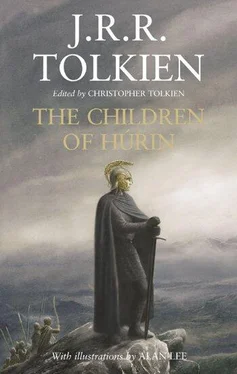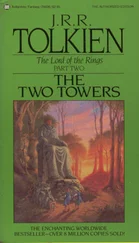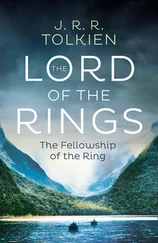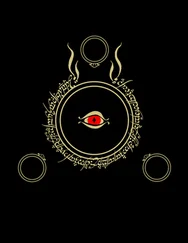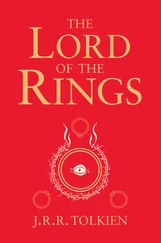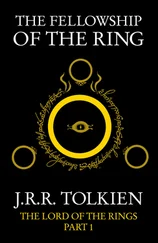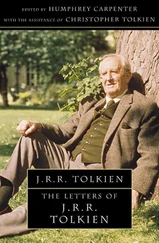The sketch map that I drew in Unfinished Tales (p. 149) to illustrate the lie of the land is not in fact well oriented. It is seen from my father’s map of Beleriand, and is so reproduced in my map for The Silmarillion , that Amon Obel was almost due east from the Crossings of Teiglin (‘the moon rose beyond Amon Obel’, p. 241), and the Teiglin was flowing south-east or south-southeast in the ravines. I have now redrawn the sketch map, and have entered also the approximate place of Cabed-en-Aras (it is said in the text, †, that ‘right in the path of Glaurung there lay now one of these gorges, by no means the deepest, but the narrowest, just north of the inflow of Celebros’).
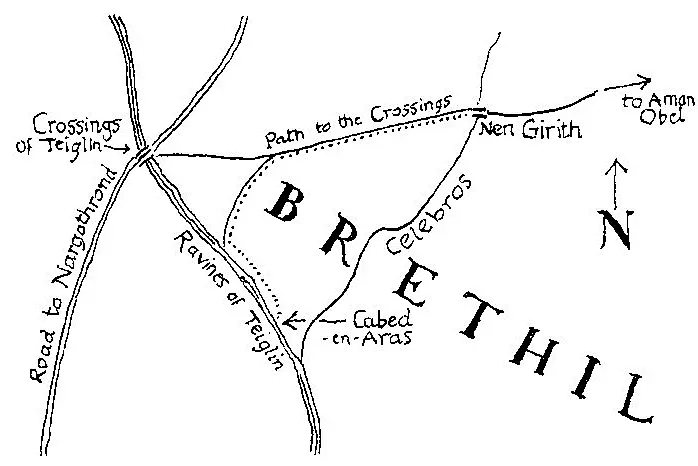
The second matter concerns the story of the slaying of Glaurung at the crossing of the ravine. There are here a draft and a final version. In the draft, Túrin and his companions climbed up the further side of the chasm until they came beneath the brink; they hung there as the night passed, and Túrin ‘strove with dark dreams of dread in which all his will was given to clinging and holding’. When day came Glaurung prepared to cross at a point ‘many paces to the northward’, and so Túrin had to climb down to the river-bed and then up the cliff again to get beneath the Dragon’s belly.
In the final version ( †) Túrin and Hunthor were only part way up the further side when Túrin said that they were wasting their strength in climbing up now, before they knew where Glaurung would cross; ‘they halted therefore and waited’. It is not said that they descended from where they were when they ceased to climb, and the passage concerning Túrin’s dream ‘in which all his will was given to clinging’ reappears from the draft text. But in the revised story there was no need for them to cling: they could and surely would have descended to the bottom and waited there. In fact, this is what they did: it is said in the final text ( Unfinished Tales , p. 134) that they were not standing in Glaurung’s path and that Túrin ‘clambered along the water-edge to come beneath him’. It seems then that the final story carries an unneeded trait from the previous draft. To give it coherence I have emended ( †) ‘since they were not standing right in Glaurung’s path’ to ‘since they were not right in Glaurung’s path’, and ‘clambered along the water-edge’ to ‘clambered along the cliff’.
These are small matters in themselves, but they clarify what are perhaps the most sharply visualised scenes in the legends of the Elder Days, and one of the greatest events.
LIST OF NAMES IN THE TALE OF THE CHILDREN OF HÚRIN
Names that appear in the map of Beleriand are followed by an asterisk.
Adanedhel— ‘Elf-man’, name given to Túrin in Nargothrond.
Aerin— A kinswoman of Húrin in Dor-lómin, taken as wife by Brodda the Easterling.
Agarwaen— ‘Bloodstained’, name taken by Túrin when he came to Nargothrond.
Ainur— ‘The Holy Ones’, the first beings created by Ilúvatar, who were before the World: the Valar and the Maiar (‘spirits of the same order as the Valar but of less degree’).
Algund— Man of Dor-lómin, member of the outlaw band that Túrin joined.
Amon Darthir *— A peak in the range of Ered Wethrin south of Dor-lómin.
Amon Ethir— ‘Hill of Spies’, a great earthwork raised by Finrod Felagund a league to the east of Nargothrond.
Amon Obel *— A hill in the midst of the Forest of Brethil, on which was built Ephel Brandir.
Amon Rûdh *— ‘The Bald Hill’, a lonely height in the lands south of Brethil, abode of Mîm.
Anach *— Pass leading down from Taur-nu-Fuin at the western end of Ered Gorgoroth.
Andróg— Man of Dor-lómin, a leader of the outlaw band that Túrin joined.
Anfauglith *— ‘Gasping Dust’, the great plain north of Taur-nu-Fuin, once grassy and named Ardgalen , but transformed into a desert by Morgoth in the Battle of Sudden Flame.
Angband— The great fortress of Morgoth in the North-west of Middle-earth.
Anglachel— Beleg’s sword, the gift of Thingol; after its reforging for Túrin named Gurthang .
Angrod— Third son of Finarfin, slain in the Dagor Bragollach.
Anguirel— Eöl’s sword.
Aranrúth— ‘King’s Ire’, Thingol’s sword.
Arda— The Earth.
Aredhel— Sister of Turgon, wife of Eöl.
Arminas— Noldorin Elf who came with Gelmir to Nargothrond to warn Orodreth of its peril.
Arroch— Húrin’s horse.
Arvernien *— The coastlands of Beleriand west of Sirion’s mouths; named in Bilbo’s song in Rivendell.
Asgon— Man of Dor-lómin who aided Túrin’s escape after the slaying of Brodda.
Azaghâl— Lord of the Dwarves of Belegost.
Barad Eithel— ‘Tower of the Well’, the fortress of the Noldor at Eithel Sirion.
Baragund— Father of Morwen; cousin of Beren.
Barahir— Father of Beren; brother of Bregolas.
Bar-en-Danwedh— ‘House of Ransom’, name given by Mîm to his house.
Bar-en-Nibin-noeg— ‘House of the Petty-dwarves’ on Amon Rûdh.
Bar Erib— A stronghold of Dor-Cúarthol south of Amon Rûdh.
Battle of Unnumbered Tears— See Nirnaeth Arnoediad.
Bauglir— ‘The Constrainer’, name given to Morgoth.
Beleg— Elf of Doriath, a great archer; friend and companion of Túrin. Called Cúthalion ‘Strongbow’.
Belegost— ‘Great Fortress’, one of the two cities of the Dwarves in the Blue Mountains.
Belegund— Father of Rían; brother of Baragund.
Beleriand *— Lands west of the Blue Mountains in the Elder Days.
Belthronding— Beleg’s bow.
Bëor— Leader of the first Men to enter Beleriand; progenitor of the House of Bëor, one of the three Houses of the Edain.
Beren— Man of the House of Bëor, lover of Lúthien, who cut a Silmaril from Morgoth’s crown; called ‘One-hand’ and Camlost ‘Empty-handed’.
Black King, The— Morgoth.
Black Sword, The— Túrin’s name in Nargothrond; also the sword itself. See Mormegil.
Blue Mountains— The great mountain chain (called Ered Luin and Ered Lindon ) between Beleriand and Eriador in the Elder Days.
Bragollach— See Dagor Bragollach.
Brandir— Ruler of the People of Haleth in Brethil when Túrin came; son of Handir.
Читать дальше
Конец ознакомительного отрывка
Купить книгу
